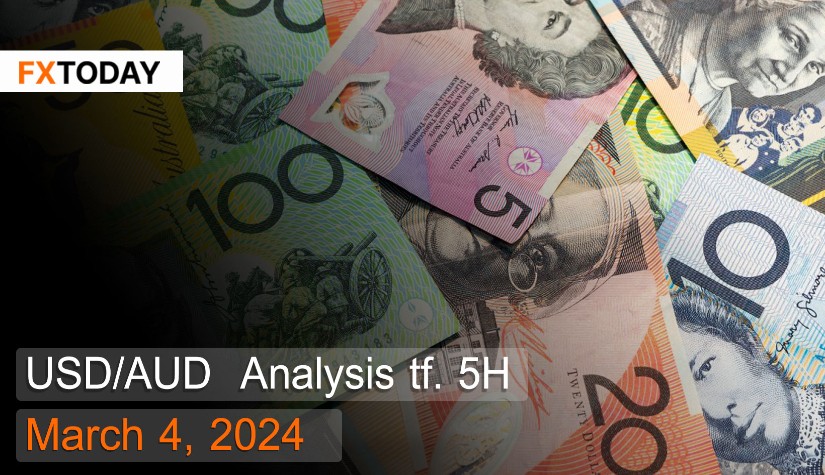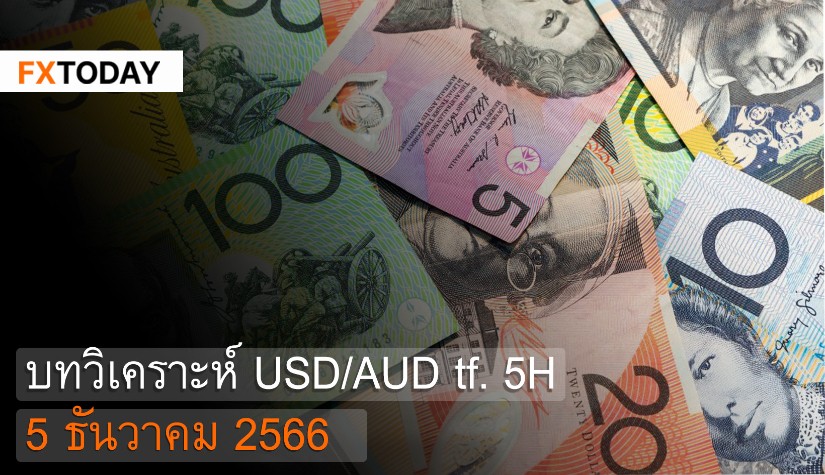The Central Bank of Australia may consider raising interest rates in the future.
The Australian dollar has weakened to around 1.54 Australian dollars per US dollar due to investors closely watching economic data announcements this week, which may provide further insights into the domestic economy and future monetary policy. The stable CPI has led policymakers at the Central Bank of Australia to contemplate raising interest rates further. However, they ultimately decided to keep the current interest rates and need to monitor inflation figures going forward.
The Consumer Price Index (CPI) of the Central Bank of Australia decreased by 11% year-on-year in February, marking the 12th consecutive month of continuous decline in consumer goods prices. The decrease in oil prices, including hot coal and natural gas prices, will undoubtedly exert pressure on export revenues.
Private sector credit in Australia increased by 0.4% month-on-month in January, but increased by 4.9% year-on-year. Business credit grew slightly by 0.7%, indicating efforts to adjust to increased raw material prices and increased spending in both investment and expansion of private sector operations.
Cost pressures in Australia increased by 0.8% quarter-on-quarter in the fourth quarter, up from 0.3% due to rapid investment in building and infrastructure, which increased by 1.5%. Meanwhile, spending on factory equipment and machinery decreased by 0.1% after increasing by 0.6% in the previous quarter. Robert Ewing, head of the Australian Bureau of Statistics' business statistics department, predicts that private sector cost pressures will increase by 7.9% this year, down from the previous estimate of 10.3%.
Retail trade in Australia increased by 1.1% month-on-month in January, indicating a recovery in the retail industry as consumers increased spending on Black Friday discounts, particularly on clothing, footwear, and jewelry, as well as household goods predominantly purchased in department stores.
The Consumer Price Index (CPI) in Australia stood at 3.4% month-on-month in January, still outside the RBA's target range of 2-3%, but lower than market expectations of 3.6% due to lower fuel costs for cars, leading to lower product costs overall. However, food prices increased by 4.4%, reflecting increased consumer demand amid concerns about future price increases.
Techical analysis data (5H)
Resistance: 1.5359, 1.5375, 1.5391
Source: Investing.com
Buy/Long 1: If the price touches support in the price range of 1.5311 - 1.5327 but cannot break the support at 1.5327, you may set a TP at approximately 1.5375 and SL at around 1.5295 or according to your acceptable risk.
Buy/Long 2: If the price breaks the resistance in the price range of 1.5359 - 1.5375, you may set a TP at approximately 1.5391 and SL at around 1.5311 or according to your acceptable risk.
Sell/Short 1: If the price touches resistance in the price range of 1.5359 - 1.5375 but cannot break the resistance at 1.5359, you may set a TP at approximately 1.5311 and SL at around 1.5391 or according to your acceptable risk.
Sell/Short 2: If the price breaks the support in the price range of 1.5311 - 1.5327, you may set a TP at approximately 1.5295 and SL at around 1.5375 or according to your acceptable risk.
Pivot point March 4, 2024 11:55 PM. GMT+7
|
Name
|
S3
|
S2
|
S1
|
Pivot Points
|
R1
|
R2
|
R3
|
| Classic | 1.5295 | 1.5311 | 1.5327 | 1.5343 | 1.5359 | 1.5375 | 1.5391 |
| Fibonacci | 1.5311 | 1.5323 | 1.5331 | 1.5343 | 1.5355 | 1.5363 | 1.5375 |
| Camarilla | 1.5334 | 1.5337 | 1.534 | 1.5343 | 1.5346 | 1.5348 | 1.5351 |
| Woodie's | 1.5295 | 1.5311 | 1.5327 | 1.5343 | 1.5359 | 1.5375 | 1.5391 |
| DeMark's | - | - | 1.5334 | 1.5347 | 1.5366 | - | - |
















